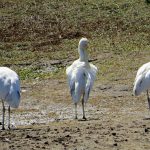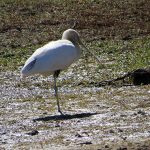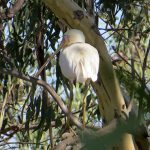YELLOW-BILLED SPOONBILL
The Yellow-billed spoonbill is a wading bird with distinctive features. It has a white plumage, and its most notable feature is its long, spatula-shaped bill, which is bright yellow. The bird’s legs are also yellow, and it has a patch of yellow skin around its eyes.
Yellow-billed spoonbills are primarily found in wetlands, estuaries, and shallow freshwater habitats. They are native to Australia and can be seen throughout most of the continent, except for the arid interior. They are also found in parts of New Guinea and Indonesia.
These birds are usually seen wading in shallow water, where they use their specialized bills to feed on small aquatic invertebrates, fish, and other small prey. They sweep their bills from side to side in the water, filtering out food items as they go.
Yellow-billed spoonbills breed in colonies, typically in trees or shrubs near water. They build large stick nests, often alongside other waterbirds, and lay a clutch of eggs. Both parents share incubation and chick-rearing duties.
Like many waterbirds, they face threats such as habitat loss and degradation, pollution, and disturbance in their breeding and foraging areas.
Yellow-billed spoonbills are part of the Threskiornithidae family, which includes ibises and spoonbills. They are closely related to other spoonbill species found in various parts of the world.
In Australia, the Royal spoonbill is a closely related species and can be confused with the yellow-billed spoonbill. However, the Royal spoonbill has a black bill with a yellow tip, while the yellow-billed spoonbill has a completely yellow bill.
Yellow-billed spoonbills are elegant and striking birds, known for their distinctive bills and graceful wading behavior. They are an interesting species to observe for birdwatchers and nature enthusiasts in their range.





